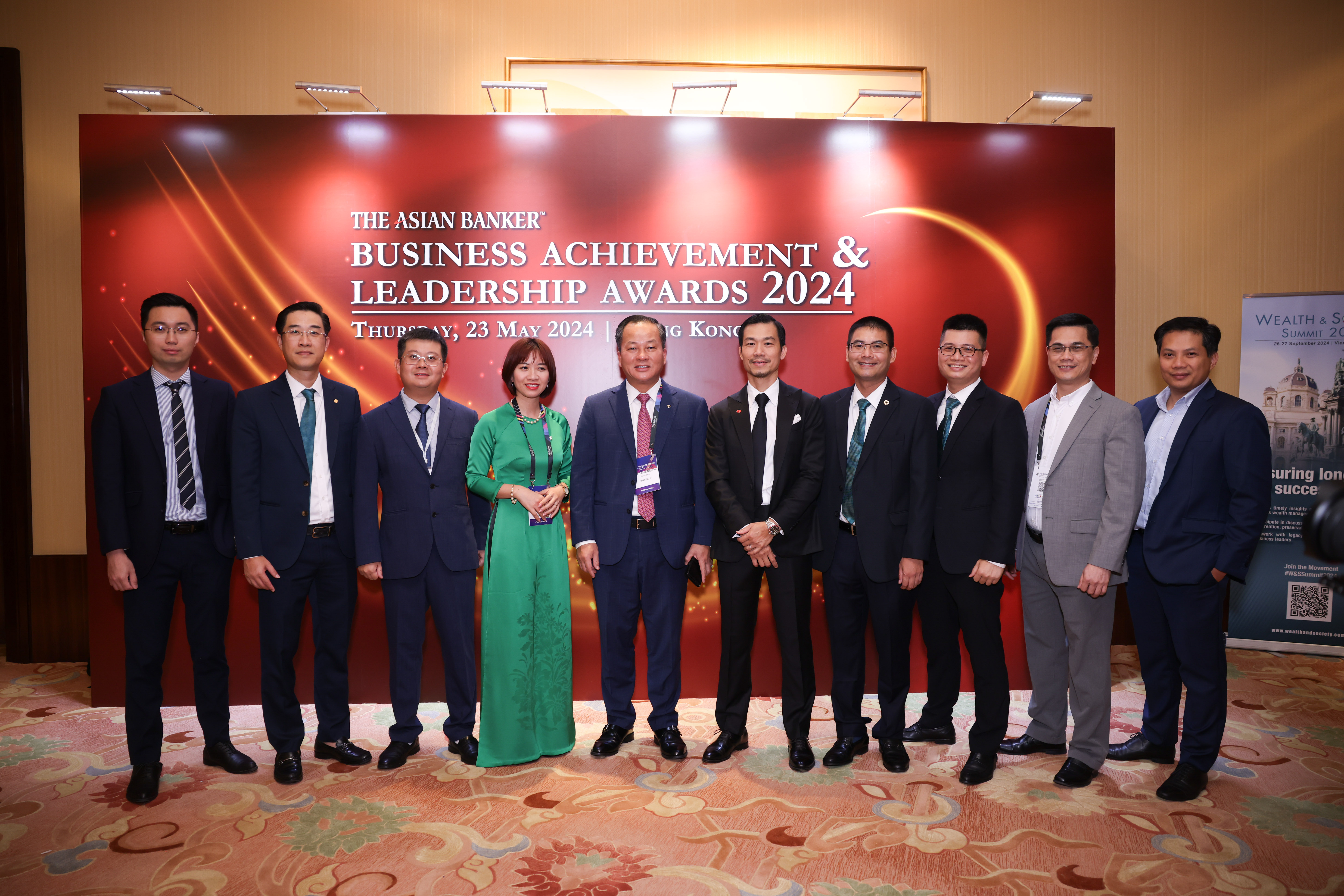Criteria for Risk Technology Implementation Awards Scorecards
All submissions will be evaluated on their own merit and considered for the most appropriate awards. Submissions may be considered for multiple awards as well. The bank and/or technology partner's answers, both in the submission kit and during the interview process, should satisfy the list of internal infrastructure, composition of balance sheet and response capabilities that we are attempting to identify and benchmark. This will help us in completing our assessment of the bank for the period under review.
We believe that institutions taking initiatives with climate risk management are able to tie long-term societal goals with the decision-making of clients, employees, and shareholders. The climate risk team/function shall demonstrate the adoption of new risk management capabilities, make progress with respect to impact and assist in building long-term substantiality. The recognition of climate risk management shall support further development of capabilities, organisation, and impact during the period under review.
| No. | Pillar | Parameter | Description |
| 1. | Monitoring, Reporting, Control and Mitigation of Climate-Related Risks | Commitment to climate actions | Demonstrated capacity to commit to national, regional, and international actions that address climate agenda. |
| Climate Risk Identification and governance | Constituted processes to define significant risk exposures. Particular events or circumstances relevant to the institution's goals are identified. | ||
| Climate Risk Analysis & Assessment | Conducts scenario analysis based on the likelihood of occurrence and size of the impact. Assessments constitute a risk. | ||
| Climate Risk Response & Treatment | Management appropriately selects risk responses and develops a set of actions to align risks with the entity’s risk tolerances and risk appetite. Policies are established and implemented to ensure that risk responses are effectively carried out. | ||
| Climate Risk Reporting & Monitoring | Formal procedures are in place for risk reporting and monitoring. Execution of action plans by senior management. Review of significant risk exposures by key stakeholders. | ||
| Business and strategy redefinition | Implementation of effective business continuity plans. Disaster management training & awareness. | ||
| 2. | Achievement in the year under review | Achievement and Business Impact | Projects undertaken by the institution to streamline and strengthen the ERM assessment and monitoring capability results in an improvement in the deployment of the capital discernible level of integration achieved and the ability to manage cross-organisational risks is realised. |
We believe that institutions with exemplary liquidity risk management are well-equipped to address unforeseen cash flow constraints. Three liquidity management functions that are of particular interest in our assessment are day-to-day cash management, longer-term cash flow management as well as liquidity risk management in times of crisis. We expect the qualifying bank to possess an excellent balance sheet position and is able to monitor and manage liquidity risk, while handling market perception well. The bank should have also successfully undertaken a liquidity risk management initiative in the year under review.
| No. | Pillar | Parameter | Description |
| 1. | Key Credit Risk Ratios | Provisions for NPL / Gross NPL and Gross NPL %age | Indicating the amount of coverage that the bank has maintained for their NPLs, this ratio will help in a normalized analysis of big & small banks. |
| Loan to deposit ratio | Indicating leverage over the banks strength in liabilities. This measure will be based on the country dynamics and scores will be assigned on a peer-to-peer comparison. | ||
| Any large loan losses in the past 5 years | Banks with large loan losses in the past 5 years will be viewed unfavourably. | ||
| 2. | Sound Credit Processes & Monitoring Tools | Comprehensive risk assessment | Bank to detail key assessment points they look into when assessing the risk profile of the borrowers. Scores will be granted based on the comprehensiveness of the assessment scorecard and a clearly defined escalation process. |
| Use of external and / or internal credit scorings | Highest scores given to banks that use both external and internal loan credit ratings, followed by those who use solely external ratings, those who work solely on internal credit ratings. Lowest scores granted to banks who have no form of credit ratings. | ||
| Independent & on-going assessment | Banks that have in place a board approved process for independent evaluation and review of the credit processes and tools will be given additional points. | ||
| Risk Analytics (Predictive / Reactive) | Infrastructure capability to consolidate data across business units and run predictive or reactive analysis on the same. Factors that will be considered ; having a focused team, technology used, real-time information, comprehensive consolidation of data, reactive or proactive approach |
||
| 3. | Achievement in the year under review | Degree of difficulty | As part of the submission packages, banks will be required to submit the details of a major change initiative or difficult event that was managed by the team. This submission will be evaluated by our advisors keeping in mind competitive and market pressures. |
| Achievement and Business Impact |
We believe that institutions with exemplary credit risk management are equipped with effective credit scoring systems as well as sound and exhaustive measurement and monitoring processes . Loans are only made to credit-worthy borrowers and excessive leveraging on its pool of deposits is avoided. The successful bank will possess excellent on and off balance sheet positions demonstrated by very good key credit risk ratios. The bank should have also successfully undertaken a credit risk management initiative in the year under review.
| No. | Pillar | Parameter | Description |
| 1. | Monitoring, Reporting, Control and Mitigation of Enterprise Risk | Risk Appetite & Strategy Alignment | Demonstrated capacity to identify and exploit opportunities while managing risks that can impact strategic objectives. |
| Enterprise Risk Identification | Constituted processes to define significant risk exposures. Particular events or circumstances relevant to the institution's goals are identified. | ||
| Enterprise Risk Analysis & Assessment | Conducts scenario analysis based on likelihood of occurrence and size of impact. Assements constitute risk tolerance levels. | ||
| Enterprise Risk Response & Treatment | Management appropriately selects risk responses and develops a set of actions to align risks with the entity’s risk tolerances and risk appetite. Policies are established and implemented to ensure the risk responses are effectively carried out. | ||
| Enterprise Risk Reporting & Monitoring | Formal procedures in place for risk reporting and monitoring. Execution of action plans by senior management. Review of significant risk exposures by key stakeholders. | ||
| Business Resilience and Continuity | Implementation of effective business continuity plans. Disaster management training & awareness. | ||
| 2. | Achievement in the year under review | Achievement and Business Impact | Projects undertaken by the institution streamline and strenghten the ERM assessment and monitoring capability resulting in an improvement in the deployment of capital. Discernible level of integration achieved and ability to manage cross-organisational risks is realised. |
We believe that institutions with exemplary market risk management are able to limit their exposure to market changes. Moreover, they must possess the capability to cope with crisis that is evidenced by stress testing results. Sound market risk management processes and exhaustive monitoring tools are in place. The bank should has also successfully undertaken a market risk management initiative in the year under review.
| No. | Pillar | Parameter | Description |
| 1. | Balance Sheet Position | Tier-1 ratio | Banks will be ranked and scored based on their Tier-1 capital ratios. |
| Loan-to-deposit ratio | LTD will be considered on the basis of the country specific trends and scores will be provided by country. The normalised scores will indicate a ranking of the amount leverage on core deposits. | ||
| Liquid assets as a proportion of total deposits and short term borrowings | This evaluation criteria aimed at understanding the speed with which a bank can dispose of its assets to raise cash will classify liquidity of assets based on market conditions in the respective countries. | ||
| Liquid assets as a proportion of total deposits and short term borrowings | This evaluation criteria aimed at understanding the speed with which a bank can dispose of its assets to raise cash will classify liquidity of assets based on market conditions in the respective countries. | ||
| Liquid assets as a proportion of CASA | In a challenging environment, it is often the CASA deposits that are the first to be withdrawn. The %age of liquid assets to CASA will determine the ability of the bank to meet unforeseen events. | ||
| Interbank market lender or borrower (degrees) | Banks will be ranked and rated on a scale of 0-5 (0 for the highest ratio value and 5 for the lowest), based on the value of the ratio of wholesale market liabilities total funding. | ||
| 2. | Monitoring Capabilities & Market Perception | Measurement and monitoring processes and systems | Banks will be rated based on the bank's monitoring capabilities for:(1) A clearly defined team and structure monitoring liquidity and market conditions with direct reporting to CFO (2) The strength of its collateral management system (3) The independence and structure of its ALCO and ALM teams (4) Bank has received the recognition from international standardisation organisations eg. ISO, Six Sigma, etc. (5) Availability of real-time information |
| Ability to borrow in the market and generate CASA and Deposit Growth | This factor will be based on the brand strength and historical success in raising money from the market or growing its CASA and deposit base. Scores will be provided by our advisors depending on the strength the franchisee and the market confidence it has. | ||
| 3. | Achievement in the year under review | Degree of difficulty | As part of the submission packages, banks will be required to submit the details of a major change initiative or difficult event that was managed by the team. This submission will be evaluated by our advisors keeping in mind competitive and market pressures. |
| Achievement and Business Impact |
We believe that institutions with exemplary operational risk management have robust processes that are able to detect and mitigate possible system failures early on. The focus will be on the resiliency of bank infrastructure and frameworks to monitor and manage processes and resources which includes risk assessment, risk decision making and the implementation of risk controls to ensure proper measurement and control of operational risk. The bank also needs to have robust contingency planning and reporting mechanisms. The bank should have also successfully undertaken an operational risk management initiative in the year under review.
| No. | Pillar | Parameter | Description |
| 1. | Sound Processes & Monitoring Tools | Comprehensive risk assessment | Banks will be ranked based on: (1) Frequency of conducting scenario stress tests. (2) Public disclosure of test results (3) Market reaction to stress results. |
| Securitisation exposures | Banks will be ranked based on: (1) How exposed the bank is to market changes (foreign exposure) (2) the credit ratings of the market the banks is being exposed to (based on international ratings) (3) Past performance during the crisis. | ||
| Independent & on-going assessment | Banks that have in place a board approved process for independent evaluation and review of the market risk processes and tools will be given additional points. Banks will also be marked up or down based on the frequency of these reviews. | ||
| Risk Analytics (Predictive / Reactive) | Infrastructure capability to consolidate data across business units and run predictive or reactive analysis on the same. Factors that will be considered; having a focussed team, technology used, real-time information, comprehensive consolidation of data, reactive or proactive approach. | ||
| 2. | Achievement in the year under review | Degree of difficulty | The constant changes happening in the market mean that banks need to be ever more nimble in their response to critical events and hence constantly update their Market Risk Management processes and systems. In this parameter we will review the success of a specific project / event that has either strengthened the market risk management capability or showcased a success. |
| Achievement and Business Impact |
We believe that a successful technology implementation project establishes an architecture that will support the bank's growth, provides it with requisite operational gains and meets the related strategic risk management objectives. The implementation process starts with a clear business case, delivers the project as planned and results in measurable risk mitigation and control for the organization on a sustained basis.
| No. | Pillar | Parameter | Description |
| 1. | Negative event in the year | Loan Losses / Frauds | We will glean for information from the news on any specific loan losses that have come to light in the year under review. Each such event will viewed unfavourably. However, we will consider the responsiveness of the bank. |
| 2. | Processes and Systems | Technological outages | Any form of technological outages in the year under review will be viewed unfavourably and the response to every such event will be rated on its handling and communication with customers and regulators. |
| Operational risk reporting | Bank will be ranked and scored based on the practice and frequency of the following assessments; (1) Assessment of its processes underlying its operations against a libray of potential threats and vulnerabilities. (2) Risk control self assessment (RCSA) - Bank evaluates its inherent risk using RCSA scorecards.(3) Documentation and Business process mapping - Identifying key risk points in the overall business process. (4) Scenario analysis is conducted to identify potential operational risk events. | ||
| 3. | Monitoring, Reporting, Control and Mitigation of Operational Risk | Reporting mechanisms | Bank should have appropriate reporting mechanisms in place at the board, senior management and business line levels. |
| Operational risk reporting | Banks will be ranked and scored based on the following; (1) Accuracy and timeliness of reporting, (2) Contents of the operational risk report including financial, operational and compliance indicators, as well as external market or environmental information. (3) Frequency of review of data capture and risk reporting processes. | ||
| Business resiliency and continuity | Banks will be ranked and scored based on the availability and practice of these; (1) Business continuity plans and their review process (2) Training and awareness programmes (3) Communication and crisis management programmes. | ||
| Independent, ongoing assessment | Banks will be ranked and scored based on the availability and practice of these; (1) Assessment of the bank's operational risk management processes is independent. (2) Independent internal audit coverage. (3) Processes are audited externally. (4) Clearly established authorities and processes for approval. | ||
| 4. | Achievement in the year under review | Degree of difficulty | Banks are encouraged to submit to us details of any projects undertaken in the business to review processes and systems and plug operational risks. Such projects will be evaluated on the basis of; impact of business, potential risk mitigation, technological superiority |
| Achievement and Business Impact |
Each year the Asian Banker recognises one chief risk officer that in several ways has contributed to the achievement of the strategies of the financial institution.
- Kindly describe the execution of three strategic priorities of the bank with regards to the contributions of the chief risk officer (CRO),
- Kindly give three examples of impact which can credited to the CRO.
- Kindly give relevant examples of industry initiatives which can be ascribed to the CRO.
- In terms of financial performance during the last 3 years, what can be considered the contribution of the CRO?
As we continue to develop and refine our scorecards, we hope to present a better and more accurate instrument to gauge the performance of banks over a certain time period against that of their peers and competitors. Ultimately, the Risk Management Awards is intended not only as an awards programme, but also as a reflective opportunity. In that sense, the programme - and the scorecard - have been developed to enable banks to grow, evolve and expand.









